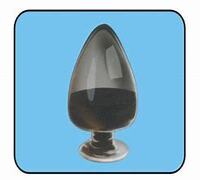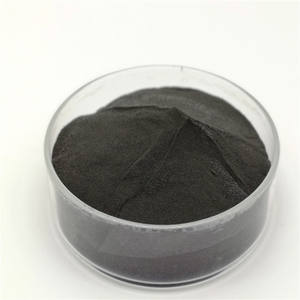Overview of Titanium Carbide (TiC) Cermet Rod in The Steel/Iron Casting Foundry Crusher Replacement
Titanium Carbide (TiC) is a technical ceramic material renowned for its exceptional hardness, wear resistance, and high melting point. Composed of titanium and carbon atoms, it forms a part of the wider family of transition metal carbides. Its unique combination of properties makes it a versatile and valuable component in various industrial applications where extreme conditions necessitate robust and durable materials.
Features of Titanium Carbide (TiC) Cermet Rod in The Steel/Iron Casting Foundry Crusher Replacement
-
Exceptional Hardness: With a Vickers hardness ranging from 2000 to 3200 Hv, TiC ranks among the hardest materials, surpassing many steels and rivaling tungsten carbide.
-
High Melting Point: Boasting a melting point of approximately 3160°C, titanium carbide is ideal for high-temperature applications where stability and strength are crucial.
-
Oxidation Resistance: Forms a protective oxide layer at elevated temperatures, slowing down further oxidation and enhancing its performance in oxidative environments.
-
Chemical Stability: Resistant to most acids and alkalis, TiC maintains its integrity in corrosive conditions, excluding hydrofluoric acid and strong alkalis.
-
Thermal Conductivity: Exhibits good thermal conductivity, facilitating heat dissipation and enhancing performance in high-heat-load applications.
-
Density: Despite its hardness, titanium carbide has a relatively low density of about 4.93 g/cm³, contributing to its use in lightweight yet durable structures.

(Titanium Carbide (TiC) Cermet Rod in The Steel/Iron Casting Foundry Crusher Replacement)
Parameters of Titanium Carbide (TiC) Cermet Rod in The Steel/Iron Casting Foundry Crusher Replacement
The and iron casting foundry uses TiC ceramics to produce components for various applications, including forging, manufacturing, and assembly. One such application is the replacement of Cermet rods used in the crushing process.
When a cermet rod is replaced with a new cermet rod, several parameters must be taken into account to ensure that the replacement results in optimal performance. These parameters include:
1. Type of replacement: Different types of cermet rods can require different replacement rates, compositions, and materials. For example, high-quality ceramic is better suited for replaceable Cermet rods than low-quality ceramics.
2. Material composition: The material composition of the Cermet rod should also be considered when replacing it. If the cermet rod has been used for a long time, it may have deteriorated or lost its strength, making it more difficult to replace. On the other hand, if the cermet rod was recently used, it may have undergone changes in composition, which can affect its performance.
3. Acceleration rate: The speed at which the cermet rod is replaced can also impact its performance. If the cermet rod is quickly replaced, it may experience faster wear and tear compared to a longer replacement rate. Additionally, the size of the cermet rod should also be considered when adjusting the replacement rate, as larger cermet rods may require more force and heat to withstand the stresses involved.
4. Heat tolerance: The heat tolerance of the cermet rod should also be considered. High heat tolerance cermet rods require less heat rejection than lower temperature cermet rods, which can make them easier to replace. However, the temperature of the cermet rod may vary depending on the type of cermet rod used, so it’s important to choose a cermet rod with appropriate thermal tolerance.
5. Elasticity: The amount of elasticity of the cermet rod should also be considered when replacing it. If the cermet rod is very elastic, it may require more force and heat to deform, which can impact its performance. On the other hand, if the cermet rod is very soft, it may be more easily bent and subjected to damage during replacement.
In summary, while it is essential to consider the specific requirements of your cermet rod replacement project, there are several parameters that can be taken into account to ensure optimal performance. By carefully considering these parameters, you can optimize your cermet rod replacement process and ensure successful replacement.

(Titanium Carbide (TiC) Cermet Rod in The Steel/Iron Casting Foundry Crusher Replacement)
Applications of Titanium Carbide (TiC) Cermet Rod in The Steel/Iron Casting Foundry Crusher Replacement
-
Cutting Tools: Integrated into tool bits, inserts, and milling cutters due to its wear resistance and heat tolerance, enhancing tool life and machining efficiency.
-
Metalworking: As hardfacing coatings for dies, molds, and wear parts subjected to severe abrasive or erosive conditions.
-
Cemented Carbides: Mixed with other carbides and binders to form cemented carbide composites for drill bits, end mills, and other cutting tools.
-
Abrasive and Wear-Resistant Components: Used in pump parts, valve components, and seals where resistance to wear and corrosion is vital.
-
Military Armor: Incorporated into armor plating due to its hardness and lightweight properties, offering enhanced protection without adding excessive weight.
-
Chemical Processing Equipment: For parts that come into contact with corrosive chemicals, benefiting from TiC’s resistance to chemical attack.
Company Profile
MyCarbides is a trusted global chemical material supplier & manufacturer with over 12-year-experience in providing super high-quality carbides and relative products.
The company has a professional technical department and Quality Supervision Department, a well-equipped laboratory, and equipped with advanced testing equipment and after-sales customer service center.
If you are looking for high-quality carbide materials and relative products, please feel free to contact us or click on the needed products to send an inquiry.
Payment Methods
L/C, T/T, Western Union, Paypal, Credit Card etc.
Shipment
It could be shipped by sea, by air, or by reveal ASAP as soon as repayment receipt.
FAQs of Titanium Carbide (TiC) Cermet Rod in The Steel/Iron Casting Foundry Crusher Replacement
Q: How is Titanium Carbide (TiC) Cermet Rod in The Steel/Iron Casting Foundry Crusher Replacement manufactured?
A: Titanium Carbide (TiC) Cermet Rod in The Steel/Iron Casting Foundry Crusher Replacement is typically produced through a process called carbothermal reduction, which involves reacting titanium dioxide with carbon at high temperatures.
Q: Is Titanium Carbide (TiC) Cermet Rod in The Steel/Iron Casting Foundry Crusher Replacement biocompatible?
A: While pure titanium is highly biocompatible, the biocompatibility of titanium carbide depends on the specific application and the potential release of titanium ions. Further testing is necessary for biomedical applications.
Q: How does Titanium Carbide (TiC) Cermet Rod in The Steel/Iron Casting Foundry Crusher Replacement compare to tungsten carbide in terms of hardness and toughness?
A: Both materials are hard, but tungsten carbide (WC) is slightly harder and tougher than titanium carbide, making WC more commonly used in tooling applications.
Q: Can Titanium Carbide (TiC) Cermet Rod in The Steel/Iron Casting Foundry Crusher Replacement be machined?
A: Due to its extreme hardness, traditional machining methods are challenging. Instead, TiC components are often formed through powder metallurgy, sintering, or by applying coatings via thermal spray or Physical Vapor Deposition (PVD).
Q: What are the main advantages of using Titanium Carbide (TiC) Cermet Rod in The Steel/Iron Casting Foundry Crusher Replacement in cutting tools?
A: TiC enhances tool life, allows for higher cutting speeds, and improves wear resistance, especially in applications involving high temperatures or abrasive materials.

(Titanium Carbide (TiC) Cermet Rod in The Steel/Iron Casting Foundry Crusher Replacement)





